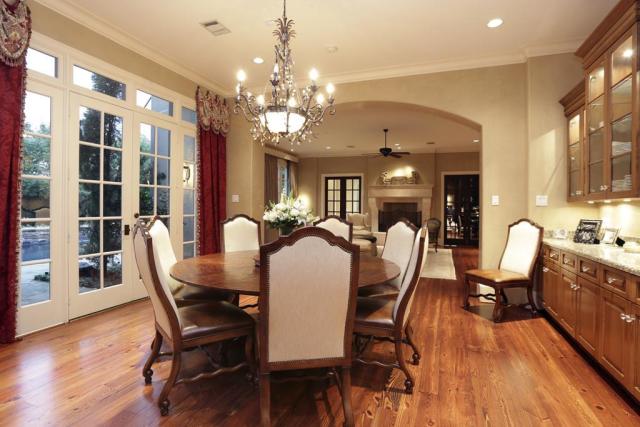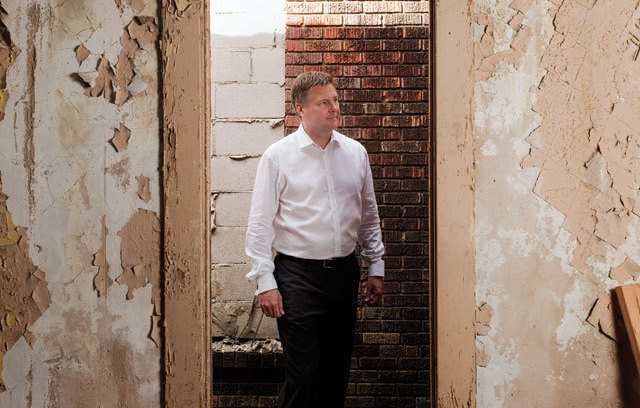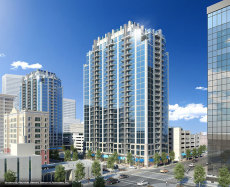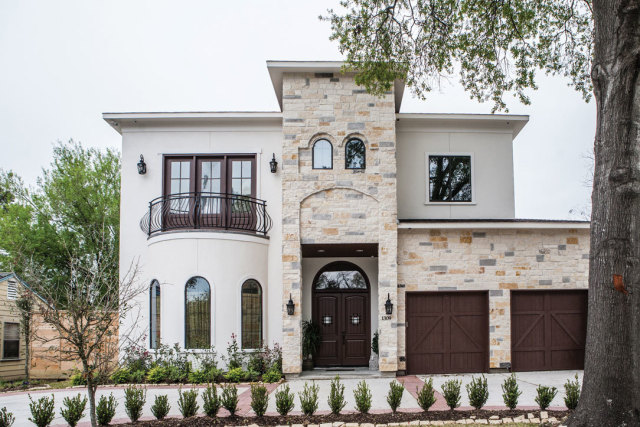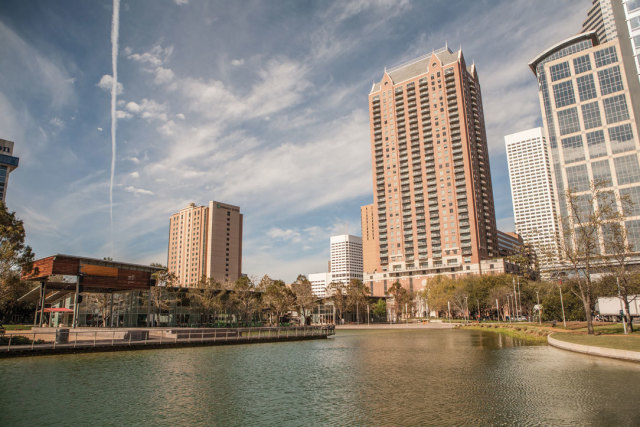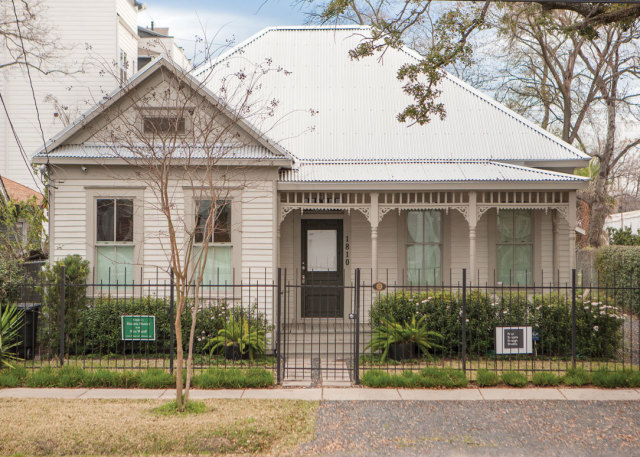Lyndsey Ray moved to Houston from Oklahoma last year to start a new job in the development office at UH, renting an apartment in a complex near the Medical Center, which worked out fine—for the first year. After her lease ended, her landlord increased her month-to-month rent by $381, a 30 percent increase. “I’d never heard of anything like that before,” says Ray, 32. “I decided there was no way I was staying in that apartment.”
Ray recently gave her two-month notice and has started to search for her next apartment, scouring Craigslist, working with brokers, and exploring neighborhoods on foot, so far without much success. “I’ve seen fluctuations at the same apartment complex as high as $200 in a single week,” she says, noting that price changes and shifty landlords make her feel like she’s getting the runaround. “You’d think I was buying a plane ticket, not looking for an apartment.”
Over the last couple years, the rental market has grown right alongside the notoriously hot real estate market. It’s imperative to act quickly and decisively. “My motto is, the quicker you move on an apartment, the better the price,” says Jan Masters, a broker with Texas Apartment Locators, adding that there are days when she calls 30 or 40 apartment buildings and can’t find a single unit for her clients. “If you come back the next day, the apartment will either be more expensive or off the market.”
And just as with home sales, it’s a seller’s market out there. Inside the loop especially, where young professionals and out-of-towners are flocking, it’s not uncommon for a manager to get three or four offers for a unit in a single day. And it’s not because they’re bargains, says Kathy Curtis, a real estate agent and former property manager who specializes in finding apartments for clients all over the city. For a one-bedroom, she says, expect to pay at least $1,200 a month inside the loop. Two-bedroom units are going for upwards of $1,500. “Texas used to be one of the most affordable places in the country, but with occupancy being so high, rents are up to California and New York levels,” she says. “In 23 years of real estate, I’ve never seen anything like this.”
Actually, though it may not look like it, Houston—even in these boomtown days—remains a far cheaper place to live than other cities. The average price for a one-bedroom apartment in Manhattan is roughly $3,200 a month these days, while in San Francisco it’s $2,900 a month. And while median household incomes in those cities are higher than Houston’s $56,000 a year, the differences—in Manhattan it’s $66,000, in San Francisco it’s $74,000—aren’t nearly enough to offset the high cost of rental housing. Nevertheless, Houston was quite used to its absurdly cheap rents.
Today, not only are landlords raising prices, they’re also getting stricter about whom they’re leasing to, leaving little room for error on the renter’s end. There are, however, a few things renters can do to increase their chances of landing a unit, according to Masters and Curtis. These include working with a broker who has an established network in your desired area; giving that broker plenty of notice of your timeline and what you’re looking for; maintaining clean criminal, credit, and rental records (read: no broken leases or evictions); and earning a monthly income at least three times your prospective rent. And giving two months notice to a landlord, as Lyndsey Ray did, is standard for those moving between rentals.
One thing to keep in mind: many buildings use computer-generated programs that automatically price apartments higher the further out a resident signs a lease from move-in day—one explanation for the fluctuations Ray has observed. Furthermore, as the move-out day for previous tenants approaches, landlords will be more desperate to find renters. “Of course, it’s a catch-22,” says Curtis. “If you only have two weeks to find an apartment your options are going to be more limited.” And it is possible to end up with nothing, if you wait too long.
Good hunting, Houston. —Peter Holley
{page break}
Out of Control
Skyrocketing rent: it’s what many a Houstonian talks about at parties these days. Enough is enough, we say, polishing off our beers. Something must be done. But what?
In a variation on a now-familiar tale, John Henry’s Hyde Park triplex was sold in February, and shortly thereafter, he received notice from the landlord. “He graciously offered us a 75 percent increase in rent,” Henry recalls, although no improvements (the Maryland St. triplex still has no central air or heating). “It had concrete floors covered with carpet,” says Henry. “It was nothing special, except for the zip code.” Henry, a laser copier repairman, was unwilling to make the jump from $600 to $1,050 a month, so after 15 years in Hyde Park, he decided to move.
In free-market Texas, there’s not a lot anyone can do about a situation like Henry’s. “Unfortunately, Texas law allows landlords to raise rents whenever they want, to any amount they want,” says Susan Carruthers of the Tenants’ Council of Houston. “The only codicil is that if the lease is still current and the landlord wants to raise rents, you have 30 to 60 days to either accept the new rent amount or reject it and move without penalty of broken lease.”
Which begs the question, what good is a lease, anyway? The protection other cities offer renters, which is to say rent control and rent stabilization, have reentered the debate in some parts of Texas, most notably Odessa, where the West Texas oil boom has turbo-charged the housing market to a degree that makes Houston look tame by comparison.
Still, the likelihood that cities will intervene in the rental market is exceedingly slim. In Texas, both rent control (capping the maximum rent a landlord can collect) and rent stabilization (limiting increases from lease to lease) are banned by state law, except in the aftermath of disaster, in which case rent control is permissible but must be personally approved by the governor, who also has the power to terminate it when the catastrophe has abated. So even if there were a local referendum and 90 percent of Houstonians were in favor of rent control, the city would be powerless to enact it. To change that state of affairs would require a vote for rent control in the state legislature, an eventuality about as likely as Portugal reclaiming Brazil.
Anyway, economists almost universally agree that rent control, at least as currently practiced in cities like New York and San Francisco, is a bad idea. There, rent-controlled properties comprise only part of the market, and they drive up non-controlled rents as landlords use them to subsidize other properties. In Canadian cities like Vancouver as well as the entire province of Quebec, by contrast, all properties are rent-stabilized. If you want rent controls, you have to go in whole hog or not at all. Even economist and New York Times columnist Paul Krugman—nobody’s idea of a free-market zealot—is a foe of rent control, in part because the desperate search for rent-controlled properties turns tenants against landlords and apartment hunters against apartment hunters.
As for Henry, a now-former Montrosian, he is of two minds on the concept. “As a property owner, I wouldn’t want anybody telling me what I could do with my property,” he says, “but as an individual, it might be imperative. I don’t want to have to live in Tomball.” So far, it hasn’t come to that. Henry recently found an affordable apartment just a couple of miles west of Hyde Park. In River Oaks, of all places. —John Nova Lomax
{page break}
Perking Up
When AMLI River Oaks, a five-story, mid-rise apartment building on West Gray, officially opened its doors to the public in May, it was with a “modest” social function. Where a lesser residence may have opted for a sheet cake, a vegetable tray, and awkward small talk, AMLI took a different approach, turning their spacious, cream-colored, flat-screen-and-pool-table-bedecked lobby into a Gatsby-themed lounge complete with raw oyster bar, towers of champagne, and a few flappers. A vintage Rolls Royce accented the front door. “It wasn’t exactly your typical building opening,” property manager Stacy Carraro told us afterward. “But it was a lot of fun.”
Communities like AMLI, targeting mid- to high-end renters, seem to be popping up all over Houston, each attempting to out-glamorize the other in what might be called The Great Amenities Arms Race of 2014.
At AMLI, which has seven properties in the Houston area, apartments begin at $1,800 a month and top off around $3,500. The motto here is “Exclusive Modern Living,” and for good reason: residents seem to exist in a state of perpetual pampering that might best be compared to a never-ending hotel stay. Naturally, there are resort-style outdoor pools with grilling stations and 24-hour fitness rooms, but lots of places have those. At AMLI properties it’s not uncommon to get access to a private viewing room with an 80-inch TV and leather chairs for you and a dozen of your closest friends, daily yoga classes, personal trainers that make house calls, and 24-hour dry cleaning pick-up and delivery. In addition to kickball, the AMLI River Oaks’s monthly events have included a wine-and-cheese tasting and gourmet cooking classes with a private chef.
The idea of turning an apartment building into a theme park for adults isn’t unique to AMLI, of course. Apartments across town are offering perks like cyber cafés, poolside cabanas, valet trash service, car-charging stations—just about anything you can think of. As such, one can’t help but wonder: is there any reason to leave these buildings and venture out into the city? “Not necessarily,” says Cynthia Gregg, the property manager at Hanover West University, a brand-new mid-rise where apartments range from $1,360 to $3,000 (there are two Hanover complexes in town, with five more in development). That’s especially true, she adds, “when you consider that we have a new partnership with Whole Foods for grocery deliveries.”
Not to be outdone by its peers, the Hanover West U is planning an 11,000-square-foot clubhouse with billiard tables, game consoles, and the requisite theater room and fitness center, as well as a massive outdoor playground where residents will enjoy cabanas, bar-side seating, TVs, and fire pits. “In the past an apartment complex pool was just a few folding chairs and tables around the water, maybe a grill, too,” says Gregg. “Now we all have to compete with one another, and everyone wants to one-up the competition.” —P.H.
{page break}
On the Contrary...
Call it developer Brandt Bowden’s Alan Greenspan moment. At a May luncheon, the managing partner at Houston-based real estate firm the Hanover Company dared to publicly state his belief that Houston residential rents would not continue their meteoric rise forever, that in fact they were already starting to level out and may well decline. He noted a “downtick in rents” over the previous three months, saying that while landlords’ concessions were “not huge,” he had nevertheless seen “evidence of rent erosion.”
His words were met with some of the same swift denials, and even vitriol, that investors hurled at Greenspan after his famous “irrational exuberance” moment. “Yeah, it kinda caused a little stir among my brethren,” he chuckles. But who could blame them, really? Bowden’s claims fly in the face of recent findings by the rent-trackers at Houston’s Apartment Data Services, which were reported on in the media. According to those numbers, annualized rents were up 11.2 percent.
While Bowden’s not backing down, he does believe some of his competitors and colleagues might have blown his words out of proportion. His claims were based, he says, on decreases of a nickel per square foot on some leases in recent months, as well as landlords lately making more concessions.
“These are not cataclysmic events, but … evidence that there is some pushback,” says Bowden, who also worries that developers might be overbuilding, if only just a tad. He has a rule of thumb, based on two decades of supply-and-demand patterns: Houston should be creating five new jobs for every new apartment unit built. By that measure, the city may be a little out of kilter on the building front.
“The amount of supply coming is probably somewhere between 16,000 and 18,000 units. If you apply that 16,000 number to the 20-year average, we would need about 80,000 new jobs,” he says, adding that only about 70,000 new jobs are projected to come this way. “But quite frankly, we’ve surprised people on the jobs front from time to time,” says Bowden. “Is it conceivable that we do 90,000 to 100,000 on the jobs front? It’s not inconceivable, but it’s not probable.”
The bottom line for renters is this: don’t be scared to haggle a bit, and remember—you could be living in an even more cutthroat and expensive market like New York, Washington, or San Francisco. “When you look at it from a national perspective, we are still one of the top low-cost cities in America, and not by a little bit but by a lot,” says Bowden. “One of the things that makes Houston great is the fact that the consumer wins on the housing trade here.”—J.N.L.



































